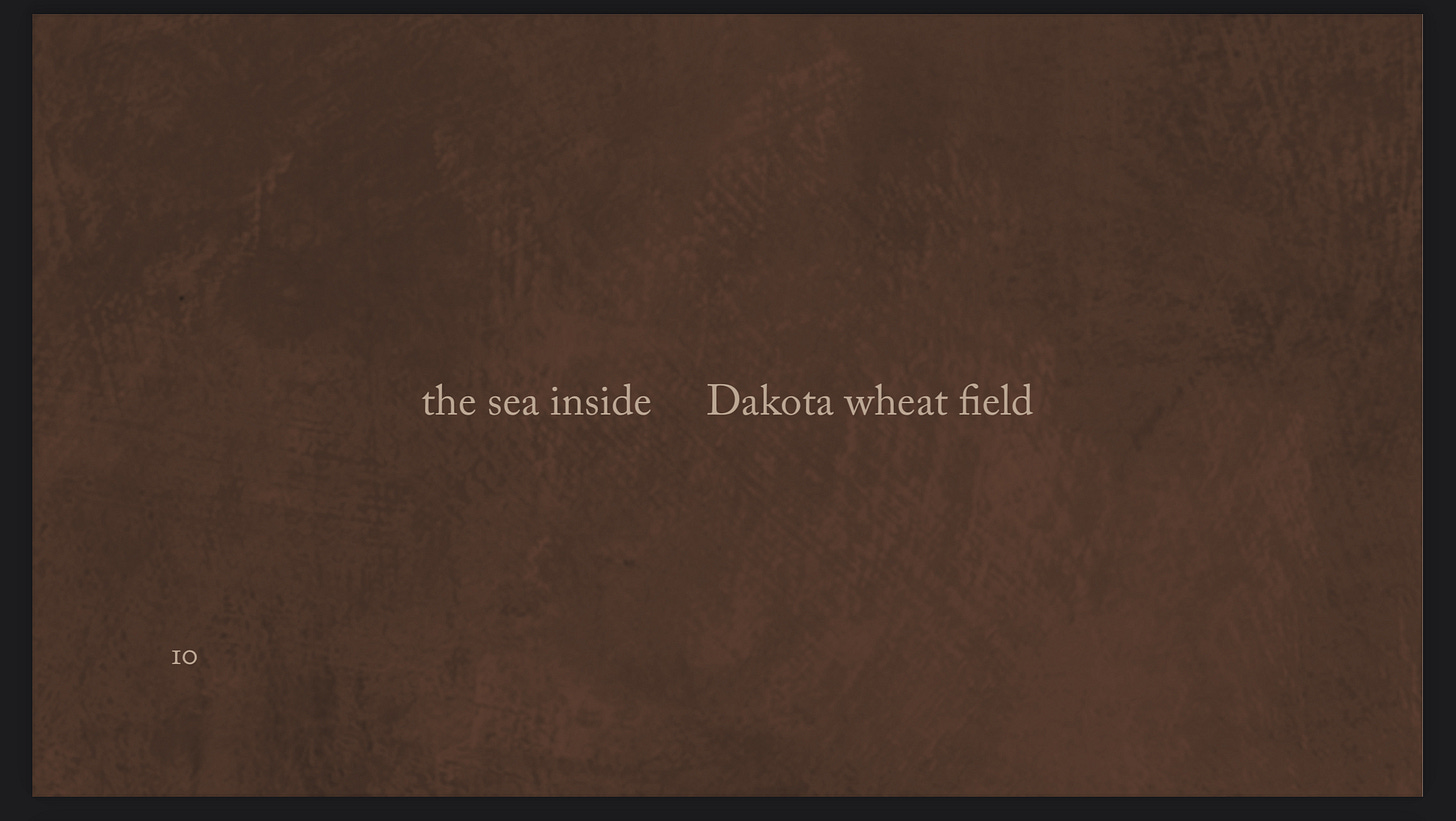How does one capture the transient nature of haiku, rope it and brand it as part of a more significant, cohesive artistic artifact?
Haiku have long been collected along seasonal lines. Any number of excellent anthologies compiled by literary haiku journals, pin down these little nuggets of insight for posterity. It is rare, at least in my experience, to experience what I felt when reading Chad Lee Robinson’s, Rope Marks.
I had printed out and bound the free pdf of the chapbook available from Snapshot Press as part of my summer reading for a unit I teach on intertextuality. I was hoping to find some good examples of a range of construction techniques and some imagery that my students could connect to - I teach in cropping and livestock farming country. I got that and more.
Perhaps it was a combination of the layout; one haiku per A4 page, in 15/16 point font, that forces the reader to physically slow down their reading and a focussed collection of simarly themed material but, I really felt as if I was experiencing a much longer poem. A mosaic of midwestern1 life and some autobiographical experiences that really connected with me.
It doesn’t take much to write a good haiku2, what is difficult is writing good haiku consistently, and each of the poems in this chapbook are consistently good. For the most part they follow phrase and fragment construction, with some reversals (the phrase coming last) for variation. There are a couple of monoku (one line arrangements) that also help break up the reading experience.
Writing using the phrase and fragment method can become monotonous. It can trap a poet every bit as much as syllable counting, so it’s a testament to Robinson’s skill and perhaps that of his editor, that the reading experience never felt that way.
I’d like to highlight two of Robinson’s Haiku and it just so happens they reside next to each other in the chapbook:
I had an instant connection with this monoku and so did my wife. Interestingly, her interpretation was slightly different, a testament perhaps to the verstility of the form and our own artistic baggage.
Comprised of two phrases artfully juxtaposed, the impresion I recevied was auditory; the susseration of dried ears of wheat in the wind linked to the the soft sound of waves. My wife, the visual artist, saw the play of wind rippling over green wheatfields. We live in the midst of wheatfields so we have/ do experience both.
This second haiku, not surprisingly, received special mention in The Heron’s Nest Annual Valentine Awards in 2005. It’s a nice break from a standard phrase and fragment, offering us a phrase and two fragments. Great imagery and a form that mimics the image, the last line leveraging repetion but also suggesting by its length, a comparison between the fish, where the speaker’s fish is shorter. Artful.
Now the Chapbook was published in 2012, so while I do encourage you to check out Snapshot Press (and their priced publications) linked below, it’s worth noting that Robinson has a website, The Deep End of the Sky, where you can read work published this year and check out some of his other publications.
If you liked reading this, you might want to:
Rope Marks can be downloaded for free from the Snapshot Press Website via this page.
I’m not entirely sure that the Dakota’s fall into the Midwest. Perhaps an American reader can enlighten me.
It’s even easier to write some shockers.







Methinks Hosai would be a favourite of hikers.
I'd forgotten about Snapshot's free e-books!
The page colour is interesting--an aspect of e-book publishing I hadn't considered.
I love the 'the sea inside' as well. Reminds me of this one by Hōsai (trans. Hiroaki Sato):
With bleeding hands I swam out of the grassfield